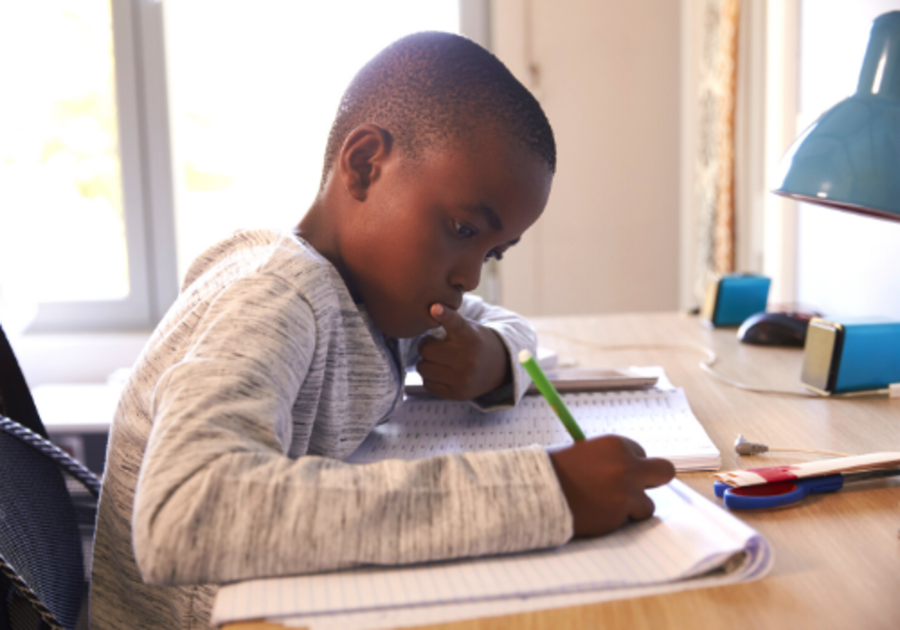Like many school districts across the country, ours has announced it will be starting the school year with distance learning.
I wanted to be more deliberate about distance schooling this year, given that for many of us, the experience of distance learning last spring was not a smooth one. You remember? When we literally were all pushed into the fire totally unprepared for what was coming?
So with that experience under our belts, and with some time to prepare, here are 10 tips and ideas to help your family not only survive, but thrive, with distance learning:
1. Communicate with your child's teacher
Our teachers want our children to succeed. But we have to remember that for most of our teachers distance learning is new also. So if something isn't working out for your child or there's a problem, reach out to the teacher and talk about it. Don't get frustrated and stew about it because the teacher, without that face-to-face interaction, might not realize there's an issue. Open communication will help both of you come up with ideas, options, and alternatives to help your child succeed.
2. Create a designated learning space
I know creating a designated learning space can be tricky depending on your family's living situation. Our house is small and my youngest has ADHD so we have to be creative with a learning space for our younger child. He works at the kitchen table where I can easily keep an eye on him and see that he's working and not spending his morning on YouTube. But we now have a drawer in a nearby cabinet where his school supplies can be easily found and put away. We also have a bin for his books in a nearby closet that includes a binder where he keeps things like his weekly assignment sheets, along with must-haves like noise-canceling headphones.
My daughter, meanwhile, has a desk in her room and I trust her to be on task. She will sometimes work in the living room or at the table as well, but it's her choice. Her school supplies are kept in her desk.
3. Stock up now on school supplies
We might not know yet the exact supplies each child will use, but I've stocked up on glue sticks, white glue, pencils and erasers, lined paper, printer paper, and new markers. I figure even if they don't need them all for school, they can use them for crafting or drawing at home, and they are on sale now. I also highly recommend noise-canceling headphones — they are very helpful for Zoom meetings, especially if you have multiple children. Don't forget a dictionary!
4. Use a wall calendar
I haven't used a wall calendar in years. However, in the spring I found that a wall calendar helped us keep Zoom times and appointment times straight. If you have a lot of meetings and appointments to track, consider getting a wall calendar for each child. If you use only one calendar, assign each child a pen of a different color so it's easy to track everyone's schedule at a glance.
5. Follow a schedule
Just like a typical in-class school week, kids do better with a routine and schedule. Get up, have breakfast, get dressed, and be ready to start the school day. This means they also go to bed on time each evening to make the mornings easier. Have lunch at about the same time each day and plan times for "recess" and P.E.
6. Use a timer
We use an Echo Dot for a timer. But any timer works. We use timers for required reading time, or to track break times or lunch. We also used the timer on those days when it was hard to stay focused and on task. We could set the timer and say, "Work for another 20 minutes and then you can have 10 minutes to play outside." We found with a timer we didn't have to nag as much about getting back to work when break time was over.
7. Create a weekly assignment sheet
My kids (and I) do better when we have things in writing. So each week, I would take their week of assignments and add them to a simple spreadsheet I printed that included assignments details and the due date as well as a space to check off after they had completed it. Having it in writing made it easy for them to see what had been done already and how much more they needed to complete. As I confirmed things were completed, I initialed the completed checkbox for my youngest.
8. Write down all passwords and website URLs in one place
So. Many. Passwords! Print them, along with the many websites each child needs to use, and put them in your child's binder for easy access.
9. Plan ahead for snacks and lunch
I work from home and sometimes I might be on a call and can't confirm what someone can eat as a snack or lunch that day. If your children are not able to handle preparing snacks and lunch on their own, try putting acceptable snacks into a small bin so they can choose on their own. Also, think about foods that might be okay to eat while working on their computer. There are definitely foods I don't want my kids eating while touching electronics! As for lunches, plan ahead by having sandwich fixings, easy to prepare foods, or even leftovers available. You could even pack them in advance as if they were headed to school each day.
10. Set rules and expectations
Kids have rules and expectations in the classroom, so why not at home for school? For some children, you might need to put them in writing. For others, you can discuss and move on. These might include the times you expect them to be working, the need to clean up their workspace after "school," and other expectations you have.
We are all facing an unknown future in terms of this school year, but the more we prepare, the more in control we should feel. I hope these ideas and tips help your family succeed with distance learning this school year. May the odds be ever in your favor!
Jennifer Hill is the publisher of Macaroni Kid Fremont, Calif.



